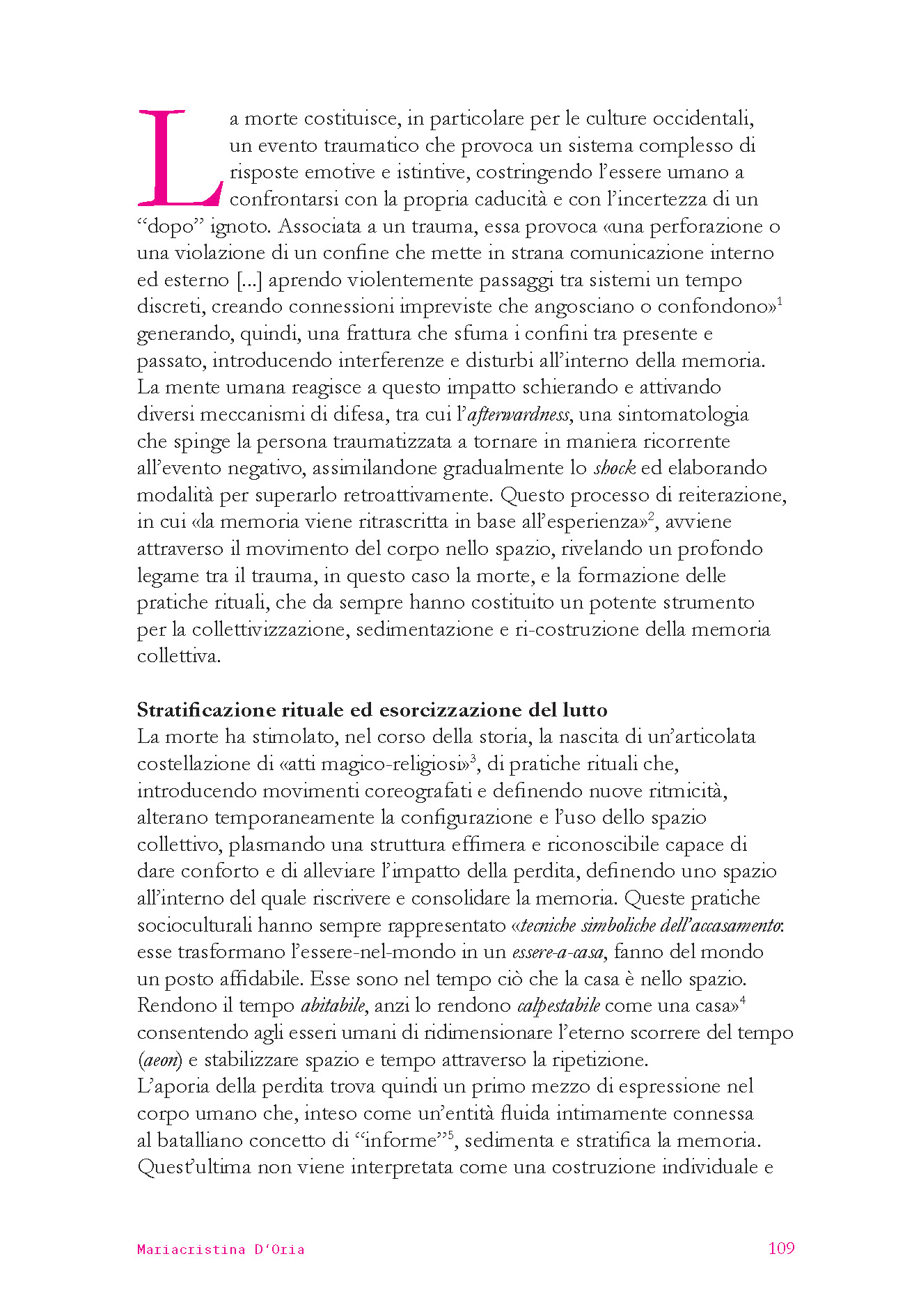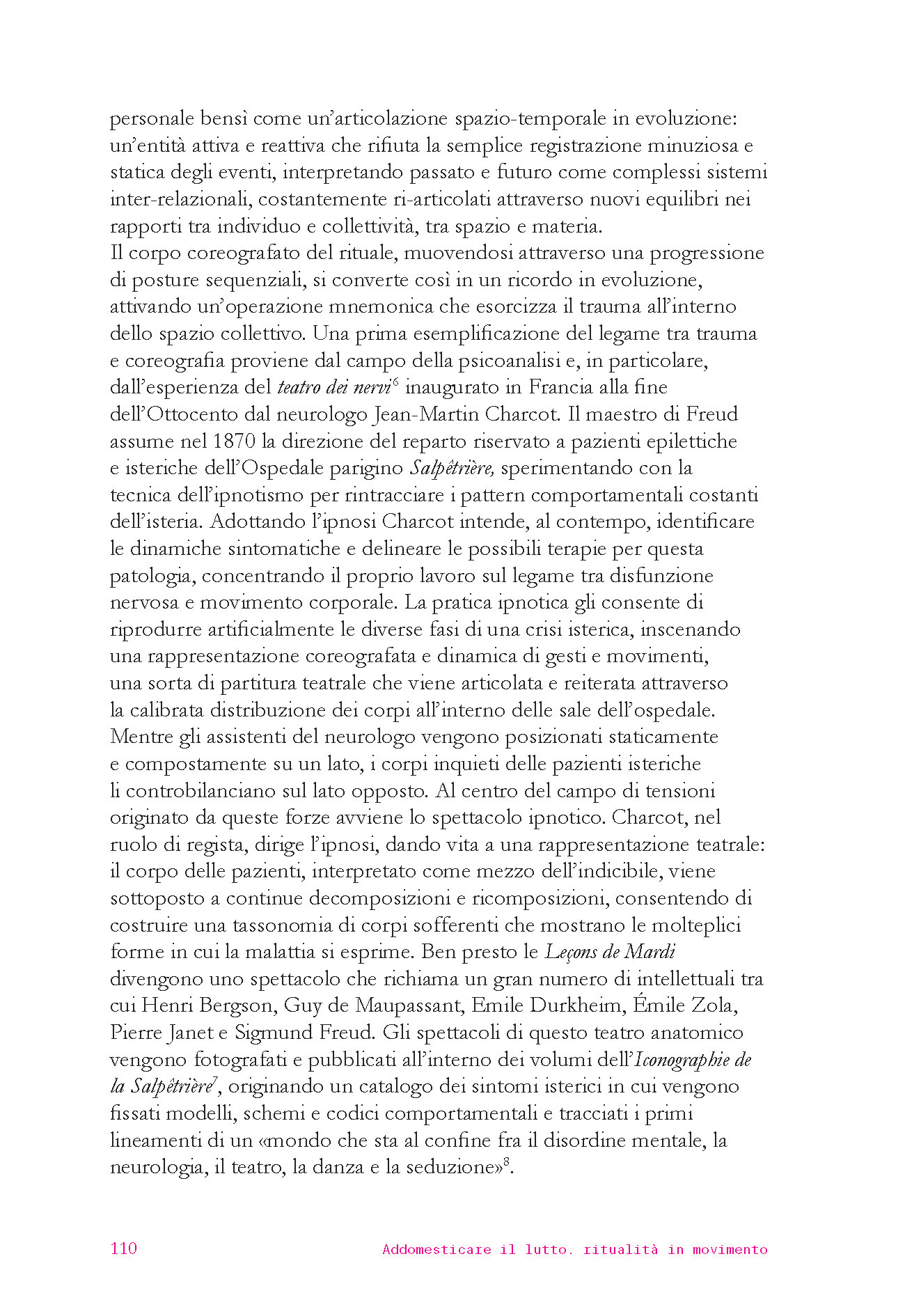addomesticare il lutto. ritualita' in movimento

type: chapter
in the publication: Architettura e morte. Riti, sepolcri e resti dell'umano
curated by: Caterina Padoa Schioppa
year: 2024
published by: LetteraVentidue Edizioni
key words: funeral rituals, human-non-human dynamics, exorcising through movement, taming mourning
In the contemporary condition of permanent instability, the eschatological question is not just emerging, but it is doing so with renewed force. Architecture, the historical negotiator in mediating the tension between human paranoia dictated by the irreversibility of existence and the inability to dominate the influences coming from an increasingly artificial outside, is now threatened by increasingly imminent projections of potential or concrete ends of the world. This is a matter of utmost importance and urgency that demands our immediate attention.
Pressing issues such as progressive land consumption, loss of biodiversity, and climate change are compelling the discipline to urgently reinterpret the relationship between human beings and the environment. This recalibration of language and strategies, theoretical foundations and operational modes, is not a choice but a necessity. In the post-human era, theoretical shifts in the relationships between relationship-entanglement, species-multi-species, consumptibility-biodegradability and body-matter, have given rise to a renewed sensitivity to now seemingly exhausted terms such as sustainability and ecology. Placed once again at the centre of a debate that has become multi-disciplinary, they are now removed from anthropocentric logics in order to be reformulated and understood within innovative modes of co-habitation between human and non-human, between living and non-living.
The contribution intends to explore the frictions and shifts resulting from this process of reformulation by noting its repercussions on a practice of human ecology inextricably linked to the eschatological question: the end of the human being in the world, death. This exploration is inscribed within the field of tensions originating between the progressive spread of the practice of cremation in Western culture and the ways in which architecture is reinterpreting its role as a medium through which to metabolise loss and, at the same time, consolidate memory. Observing the attempts of reconciliation between its metaphysical value and the material impact it produces on the form of the city, the contribution traces the new rituals and spatialities deriving from the reinterpretation of practices linked to death through a trajectory that, starting from the public sphere, plunges into the most intimate dimension of the home, to finally return to a re-domesticated public space.
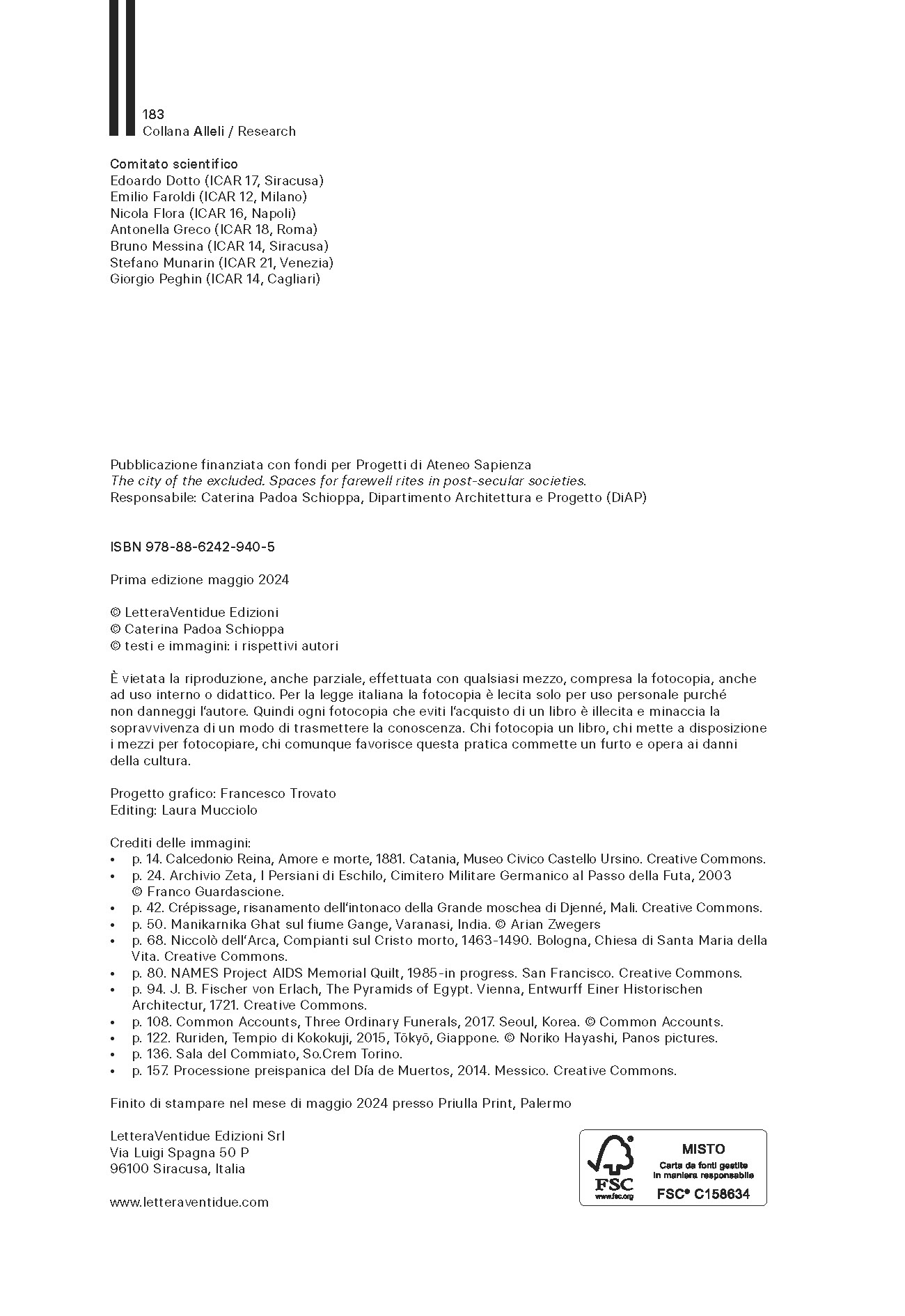
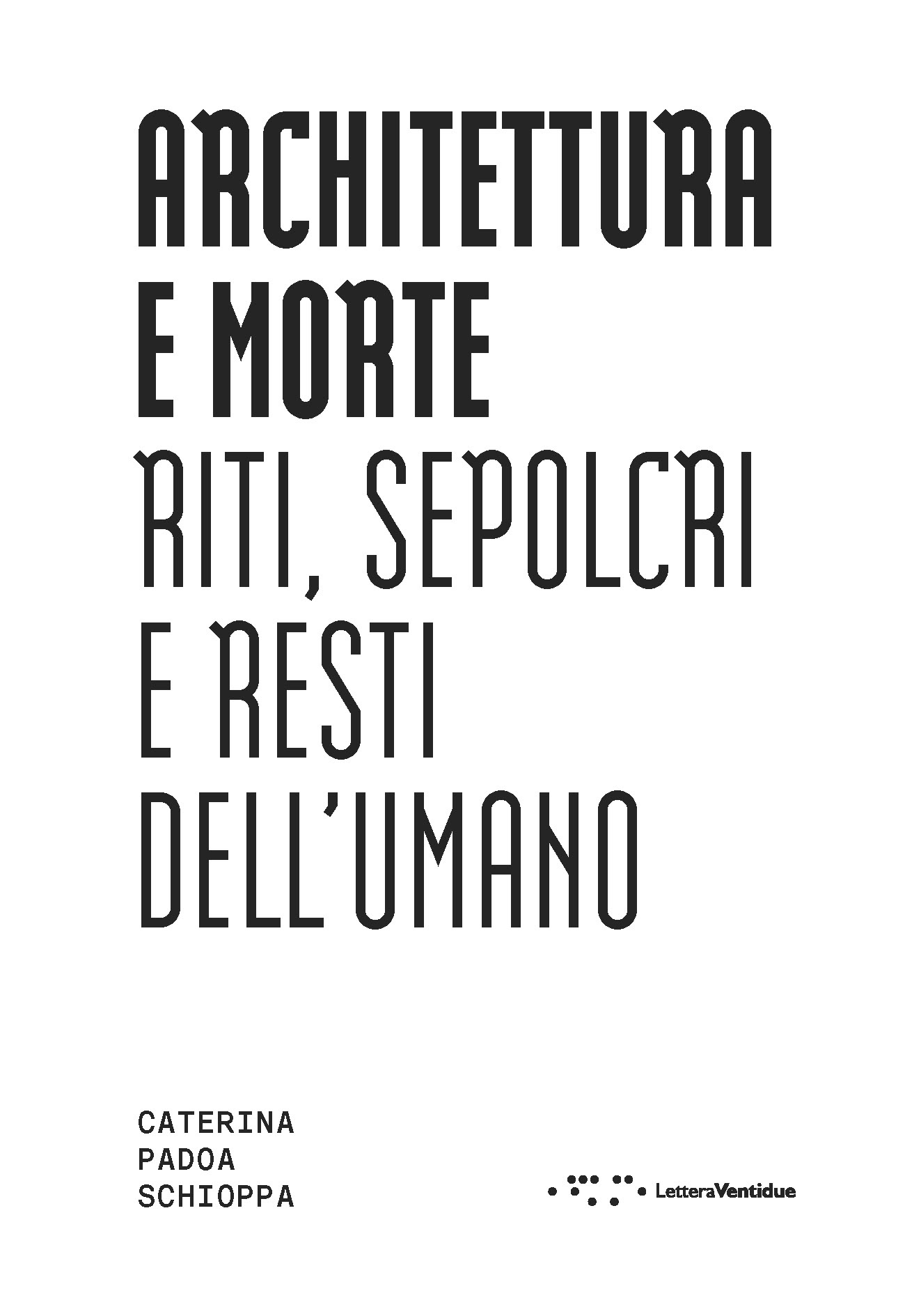

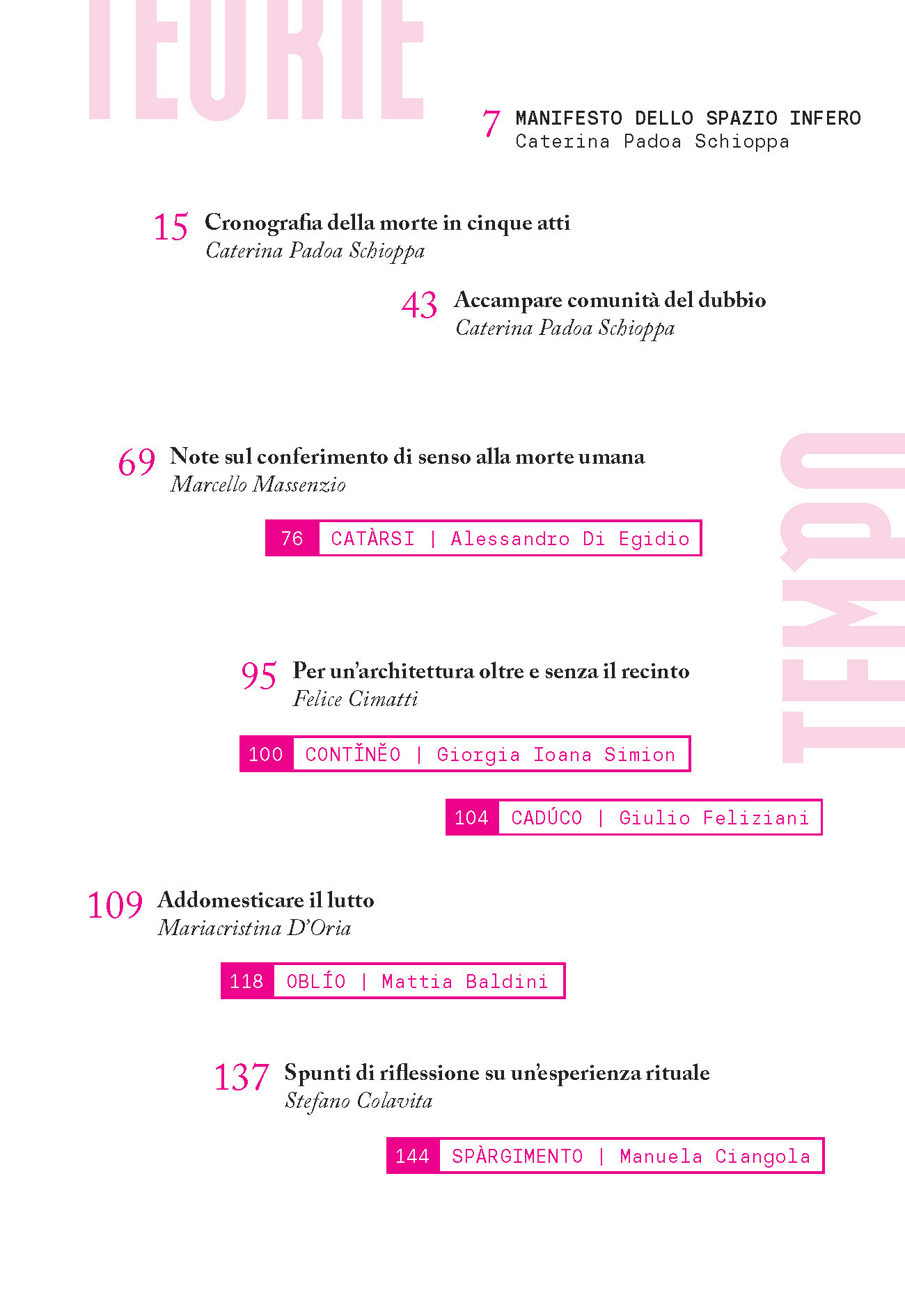
choreographing trauma
